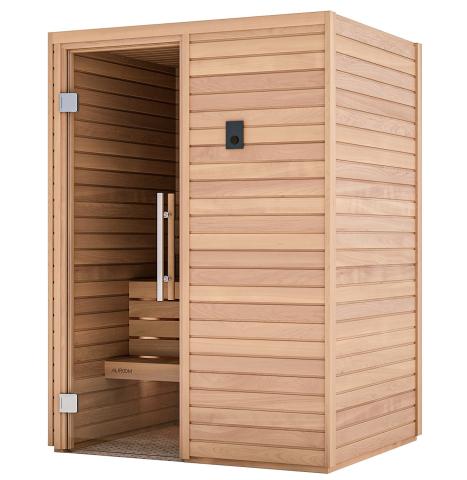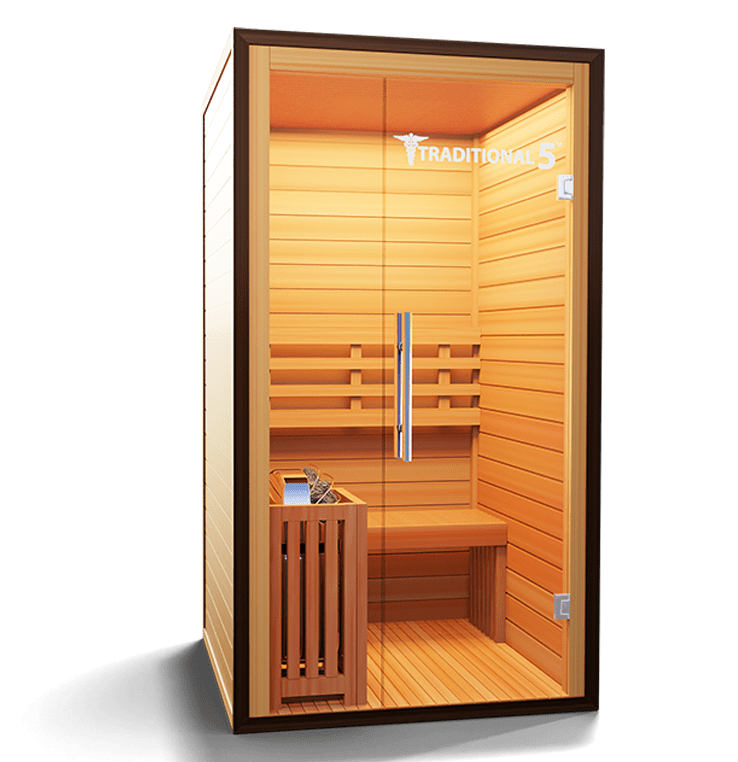The smart Trick of Traditional Sauna That Nobody is Talking About
The smart Trick of Traditional Sauna That Nobody is Talking About
Blog Article
Traditional Sauna Fundamentals Explained
Table of ContentsTraditional Sauna for DummiesThe Best Strategy To Use For Traditional SaunaThe Basic Principles Of Traditional Sauna Everything about Traditional SaunaFascination About Traditional Sauna
Many of the weight shed in a sauna is water loss and is re-gained upon rehydrating. However, undoubtedly sauna can be a fundamental part of a healthy weight management program. To take a look at the differences between conventional and IR saunas, I will separate these right into proven, academic, and made distinctions.Therefore, the best point in the saunawhich is at the ceiling straight above the sauna heateris typically between 185 and 190 F. Claims that a standard sauna goes beyond 200 F is just not real and not applicable for electric saunas sold in the US. The temperature for a far-infrared sauna is typically set in between 120 and 140 F; nevertheless, unlike the typical sauna, the goal in and IR space is not to accomplish a high temperature level.

When a traditional sauna has been effectively warmed, the sauna walls are cozy, the air temperature level has achieved established temperature and the rocks are incredibly heated. As an interesting side note, the heated wall surfaces and the rocks are sending out far-infrared warmth, incorporated with the heated air, to develop an "wrapping up warm".
Some Of Traditional Sauna
When the high temperature level is attained, the elements cycle on and off to keep the high temperature. A lot of standard sauna individuals appreciate pouring water over the rocks to create steam to raise sauna moisture degrees. The benefits of pouring water over the rocks consist of: making the space a lot more comfortable, dampening the nasal passages, and allowing the use of aromatherapy by mixing necessary oils with the water.

When the power goes into the body, it causes the body temperature level to raise and inevitably results in sweat. In an infrared sauna it is necessary for the emitters/heaters to remain on nearly continuously. Since there is no mass of rocks to keep warmth, the sauna will cool if the emitters turned off.
Traditional Sauna Fundamentals Explained
As pointed out over, the sauna bather in an infrared area wants to position himself in front of operating emitters to get maximum gain from the warmth. The heating time for both spaces can be very various, relying on just how the areas are made use of. For a conventional sauna, a bather needs to allow 30-40 mins for the room to accomplish a preferred temperature and to appropriately pre-heat the rocks.

A well constructed sauna will usually attain a temperature level of 150-160 F in concerning 30-40 minutes. For hotter temperatures, the area may need to heat for a longer duration.
To some, 15 mins was "wasted" while the infrared energy warmed the wood panels instead of heating a body, while others locate a pre-heated room to be extra comfortable and think a raised beginning temperature level is required to begin perspiring. The length of suggested usage for each area is roughly the exact same (10-15 mins per session); however, due to the lower air temperatures and the ability to feel the results of infrared heat quicker than a traditional sauna, it is weblink not unusual for an individual to invest a total amount of 20-30 minutes in an infrared sauna.
Getting My Traditional Sauna To Work

The ordinary price per kWH of electrical power in the united state is approximately $0.11, so a 4.5 kW heating system will dig this set you back approximately $.50 to run for one hour, if the heating unit runs continually for one hour. Normally a sauna heating system will certainly run for 75% of the first hour and 50% of subsequent hours on because the elements cycle once the set temperature level is accomplished.
A 2 individual far-infrared room is normally physically smaller than a typical sauna, typically regarding 4' x 4' or smaller sized. The IR heating unit is typically 1.5-1.7 kW utilizing a 120 volt 15 amp plug-in service. Because the room can be utilized earlier than a sauna space, we will certainly presume the room is used for to of an hour including warmth up time.
Finally, there is a rarely discussed distinction in the social experience between both spaces. While our society has actually shed redirected here a few of the social advantage of the typical sauna experience, it can be very socially fulfilling (Traditional Sauna). From family members time in the sauna, to heart-felt conversations with loved ones, to sauna partiesthe conventional sauna experience can lead to intimate socializing
Getting My Traditional Sauna To Work
The majority of greater end infrared areas consist of colored light treatment, audio systems and full-glass fronts.
Report this page